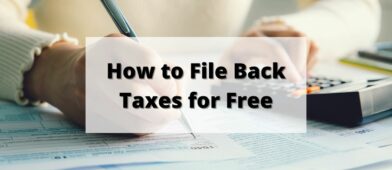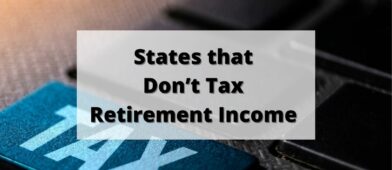Ever wonder what the average tax refund is?
Wonder no more because the IRS publishes statistics every week!
I’ve been watching the average tax refund statistic for years and it’s always settled around $3,000.
Last year, it ended up just over $3,000.
For the 2024 filing season average tax refund is (as of 3/8/2024):
That’s based on 62.7 million tax returns received, of which 61.8 million have been processed.
At around this time last year, the average tax refund was $2,972. It would settle at $3,089 once the season ended. Also, remember, refunds are just how much people have overpaid taxes.
Normally, if taxpayers didn’t adjust their withholding in the middle of the year, the smaller refund means, in aggregate, people are paying more in taxes.
As is always the case, we’ll probably see a slightly higher average tax refund now as those who know they are owed a refund will likely file as soon as possible. Those who owe can wait and so the average tends to slide as the tax season wears on.
Table of Contents
Historical Average Refund Amounts
The average refund rate tends to fall as we near tax day (April 15th normally) and keep drifting down. The folks due a refund want to file as early as possible. The folks who owe taxes are going to wait with the procrastinators. This year will be different but since there were no major tax law changes, it’ll probably be similar.
How does this compare to previous years?
Here are the previous year’s average refund amounts:
| Tax Filing Year | Average Tax Refund |
|---|---|
| 2023 | $3,089 |
| 2022 | $3,033 |
| 2021 | $2,879 |
| 2020 | $2,767 |
| 2019 | $2,869 |
| 2018 | $2,910 |
| 2017 | $2,888 |
| 2016 | $2,832 |
| 2015 | $2,797 |
| 2014 | $2,792 |
| 2013 | $2,755 |
| 2012 | $2,803 |
| 2011 | $3,129 |
| 2010 | $3,149 |
If you need help, here are some tips to getting a bigger tax refund.
What can you buy with the average tax refund?
Hmmm… let’s say it ends up with $2,878 to play with. (we did the math based on March 31st, 2017 numbers when the average refund was $2,878 — it’s similar so you get the idea!)
How about:
- 720 Big Macs or 686 Whoppers
- 4 Dyson Ball Animal Pro Upright Vacuums – in purple of course
- 10,619 packages of 500 pieces 6-12mm Googly Eyes (that’s 5.3 million eyes for those of you keeping score at home)
- For those more nefarious, you can get 472 orders of Pharmex Labels “For Rectal Use Only” – 500 per roll, 2 rolls per box!
- 3 PlayStation 5s – one for you, 2 for your two closest friends
- 29 Amazon Echos (or 58 Amazon Echo Dots!)
- One of those fancy Casper mattresses. Actually, it’s anywhere from 5 Twins to two and a half CAL Kings.
- Your choice of nearly 6,000 used cars on CarFax
- The most exciting/shocking/terrible 30 seconds of your life in Vegas at Roulette – just remember, always bet on black.
- It’ll become $28,960 after 30 years of 8% annual appreciation.
Finally, if you have credit card debt, making a $2,878 payment on it now rather than paying the minimum each month will save you $2,347 in interest. You’ll nearly double your money in a relatively short period of time.
A $5,000 credit card debt at 18% and minimum payments of $125 will be fully paid off in 5 years and 2 months. You’ll pay $7693, 35% of which ($2,693) will be interest.
Chop off the value of your tax refund (if it’s average), and now a $2,122 balance with the same APR and monthly payment, will be done in 1 year and 8 months. You’ll pay $2,468, 14% of which ($346) will be bank interest.
The difference is $2,347.
What should you do if you have a huge tax refund?
$3,000 is a lot of money.
All it means is that the government withheld more than necessary from your paycheck. The government isn’t mean – they take out what you tell them to take out.
How do you fix this? You need to submit a new W-4 with your employer. The Form W-4 is what your employer uses to calculate how much federal income tax to hold back. This is required by law, you’re supposed to pay taxes on your earnings as you collect them.
How do you compare with other taxpayers?
This is where the average tax refund statistic can be misleading.
It’s not a measure of how much in taxes you’re paying, it’s only telling you how much you overpaid.
People with big tax refunds aren’t “better” at doing their taxes. They didn’t find more deductions or more credits, they simply overpaid their taxes throughout the year.
The closest figure for that is average tax rates. For that, we turn to The Joint Committee on Taxation and their look of the Federal Tax System for 2015. The Tax Foundation did us a favor and in their look at average tax rates from 2015, produced this chart:
If you use tax preparation software or a tax preparer, you probably get all the deductions and credits you’re due. You probably could’ve played a year end tax move games but you’re not missing out on a huge deduction or credit that other people know about but you don’t. (if you e-file, you’ll get that tax refund very quickly)
If you get a massive tax refund, you should adjust your withholding to make the refund smaller.
How much was your refund this year and what do you plan on doing with it?





Troy @ Market History says
Here in Australia we file our taxes July-Oct. As a business owner, I don’t usually get much of a tax refund.
Ms. Frugal Asian Finance says
The average is VERY close to what Mr. FAF and I got back this year. We put the tax refund towards our mortgage. We just can’t wait to pay it off!